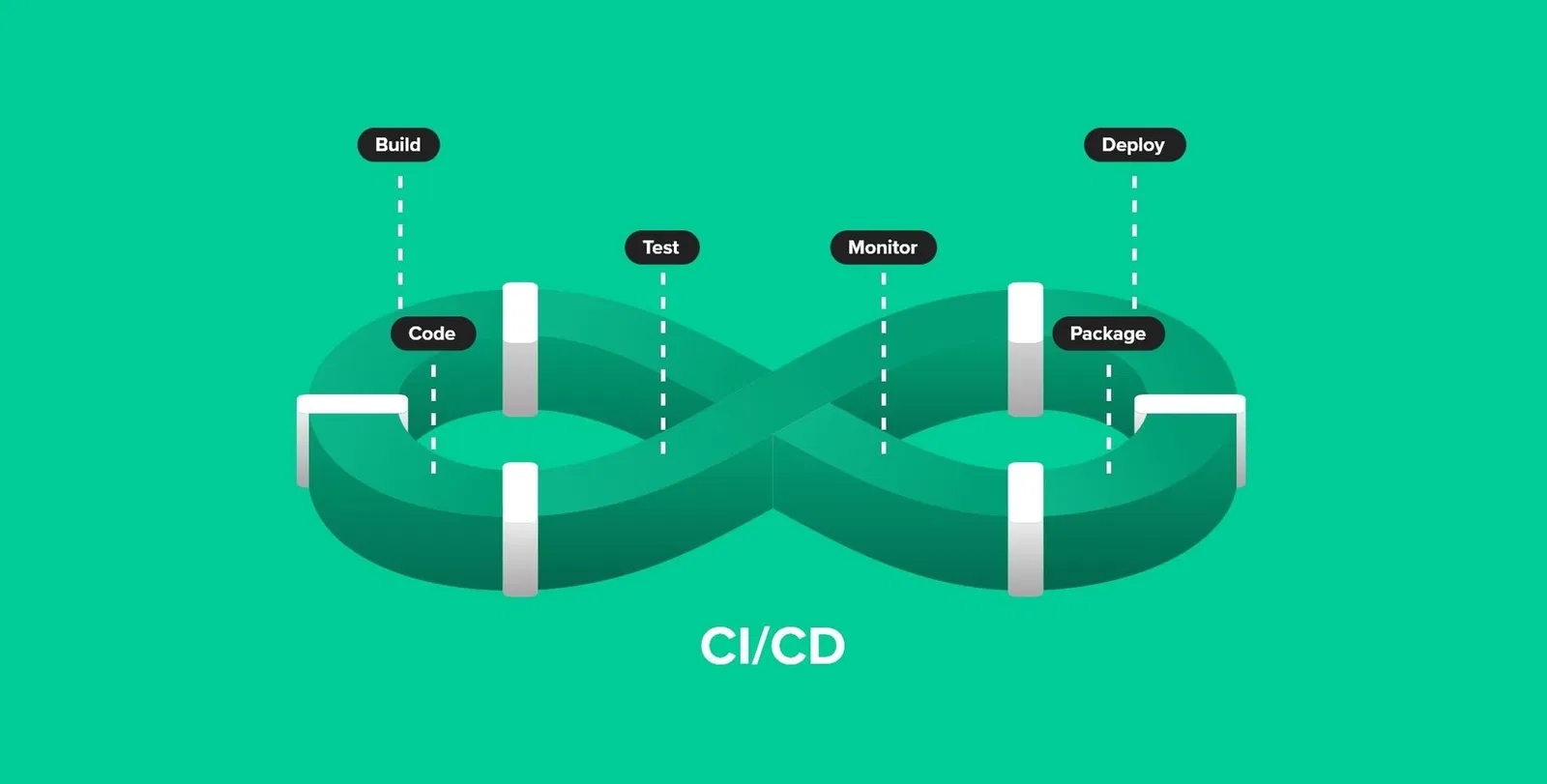
How to Implement Continuous Integration and Continuous Deployment (CI/CD) in Your DevOps Workflow
By Adedayo Oyetoke, Published on: January 11th 2025 5 min, 932 word Views: 407
Implementing Continuous Integration (CI) and Continuous Deployment (CD) within your DevOps workflow is essential for enhancing software development efficiency, quality, and collaboration. This comprehensive guide will walk you through the fundamentals, benefits, prerequisites, implementation steps, challenges, best practices, and real-world examples of CI/CD in DevOps.
Continuous Integration (CI) is a development practice where developers frequently integrate code changes into a shared repository, followed by automated builds and tests. Continuous Deployment (CD) extends this by automatically deploying code changes to production after passing the CI pipeline, ensuring that software is always in a releasable state.
In the context of DevOps, CI/CD is crucial as it bridges the gap between development and operations teams, fostering a culture of collaboration and shared responsibility. This integration accelerates software delivery, enhances quality, and aligns with business objectives.
1. Introduction to CI/CD
Continuous Integration (CI) involves developers regularly integrating code into a shared repository, typically multiple times a day, followed by automatic building and testing to catch errors early.
Continuous Deployment (CD) takes this further by automatically deploying all code changes to a testing or production environment after the build stage, streamlining the release process.
CI/CD is pivotal in modern software development, particularly within the DevOps framework, as it enhances efficiency, reduces risk, and fosters collaboration.
- Further Reading: DevOps Practices at Wireless Terminal
- Comprehensive Overview: What is CI/CD?
2. Benefits of CI/CD
- Faster Feedback Loops: CI/CD allows developers to receive immediate feedback on code quality, facilitating quick fixes. Benefits of CI/CD
- Reduced Risk: Smaller, frequent updates mean fewer large-scale changes that could lead to issues. Risk Reduction with CI/CD
- Improved Software Quality: Automated testing ensures high-quality software with fewer bugs. Quality Assurance in CI/CD
- Enhanced Collaboration: CI/CD practices help in breaking down silos between teams. DevOps Collaboration
- Learn More About DevOps Role: What is a DevOps Engineer?
3. Prerequisites for Implementing CI/CD
To successfully implement CI/CD, ensure the following tools and practices are in place:
- Version Control System: Git is the go-to for managing code versions. Git Basics
- Automated Testing Frameworks: Essential for maintaining code quality. Testing Tools for CI/CD
- CI Server or Tool: Jenkins, GitLab CI, GitHub Actions are among the popular choices. Choosing a CI/CD Tool
- Containerization: Docker for ensuring consistency across environments. Docker in CI/CD
- AI in DevOps: AI in DevOps: Revolutionizing Software Delivery
4. Step-by-Step Implementation Guide
a. Set Up Your Code Repository:
- Branching Strategy: Implement GitFlow or similar for managing development branches. GitFlow
- Structuring Your Repository for CI/CD: Organize your repository to support automated builds and deployments, including clear directory structures and configuration files. Read more on The Best Practices for Structuring Repos
b. Choose and Configure Your CI/CD Tool:
- Tool Selection: Consider tools like Jenkins, CircleCI, Travis CI, and GitHub Actions, each offering unique features and integrations. Compare CI Tools
- Configuration: Set up build triggers, define pipeline stages, and configure notifications to align with your development workflow. Jenkins Setup
c. Write and Integrate Automated Tests:
- Test Types: Incorporate unit tests, integration tests, and end-to-end tests to comprehensively validate code functionality. Testing Types in CI/CD
- Integration: Automate the execution of tests within the CI pipeline to ensure immediate feedback on code changes. Integrating Tests with CI
d. Define Your Build Process:
- Compiling Code and Running Tests: Automate the build process to compile code, execute tests, and package applications consistently.
Packaging or Containerizing Your Application: Use tools like Docker to create consistent deployment artifacts across environments. - Steps: Compile, test, package, containerize. Build Process Automation
e. Automate Deployment:
- Deployment Strategy: Implement strategies such as blue/green deployments or canary releases to minimize downtime and mitigate risks. Read more on Deployment Strategies
- Deployment Automation: Utilize orchestration tools like Kubernetes to manage automated deployments efficiently.
- Tools: Kubernetes for orchestration. Kubernetes in CI/CD
f. Monitoring and Feedback:
- Monitoring Tools: Use tools like Prometheus and Grafana to monitor application performance and system health. Read Monitoring with Prometheus
- Feedback Loop: Establish channels for immediate feedback to developers, enabling prompt issue resolution and continuous improvement. Feedback in DevOps
DevOps Best Practices: DevOps at Wireless Terminal
5. Challenges and Best Practices
- Common Pitfalls:
- Neglecting Test Quality: Ensure that automated tests are reliable and cover critical functionality to prevent false positives or negatives.
- Overcomplicating Pipelines: Keep CI/CD pipelines straightforward to maintain efficiency and ease of troubleshooting. Read more on CI/CD Pitfalls
- Best Practices:
- Keep Pipelines Simple but Effective: Design pipelines that are easy to understand and maintain, focusing on essential stages. Simplicity in CI/CD
- Ensure Tests Are Fast and Reliable: Optimize tests for speed and accuracy to facilitate rapid feedback loops. Testing Best Practices
- Practice Infrastructure as Code (IaC): Manage infrastructure through code to enable versioning, automation, and consistency across environments. IaC Overview
- Regularly Review and Optimize Your CI/CD Process: Continuously assess and refine your CI/CD pipelines to adapt to evolving project needs and technological advancements. Optimizing CI/CD
6. Case Studies or Examples
- Example: Netflix's approach to CI/CD. Netflix CI/CD
- Success Story: How Amazon uses CI/CD. Amazon DevOps
- E-commerce Company: An e-commerce platform implemented CI/CD pipelines, resulting in faster time to market and improved software quality. - Medium
- SaaS Employee Management Platform: By adopting AWS CodePipeline, a SaaS company automated its deployment process, enhancing operational efficiency. -Stratus10
7. Conclusion
CI/CD is integral to modern DevOps, providing substantial benefits in terms of speed, quality, and team collaboration. Encourage continuous learning and adaptation to stay current with CI/CD methodologies.
- For Deeper Learning:
This blog post provides a detailed guide to implementing CI/CD in a DevOps environment, enriched with external resources for deeper understanding and practical application.
